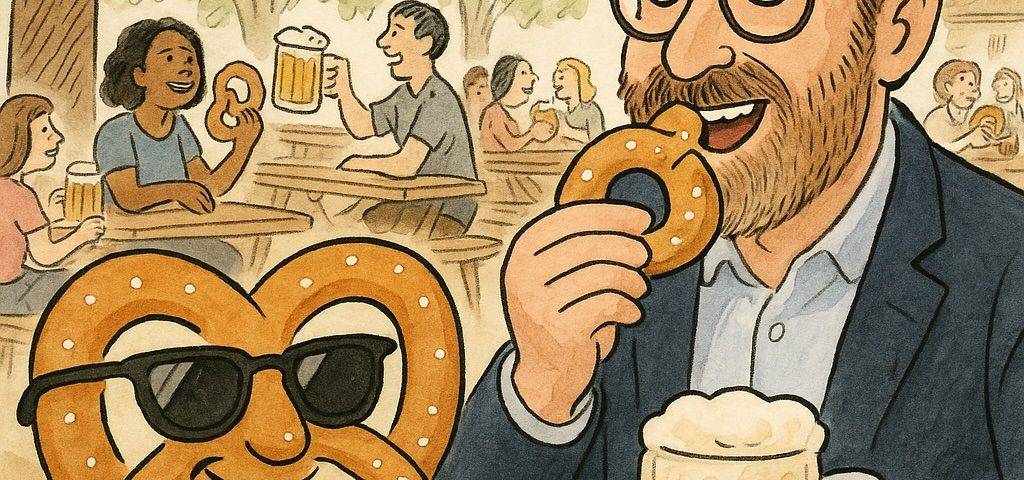
Update from the Chancellor – Beauty $$$, Pretty Hotels, Soap & a Ghost
7. April 2025There are few things in life that can unite people as magically as food—and in Bavaria, nothing does this quite like the humble Breze.
Yes, the Breze: crispy on the outside, soft on the inside, sprinkled with just enough salt to make you question your life choices after the second one. 😉
But what many don’t know is that the Breze isn’t just a snack—it’s a symbol of Bavarian tradition, history, and even good fortune.

Much like the baguette is sacred in France or the naan is cherished in India, the Breze holds a special place in the Bavarian heart (and stomach).
Interestingly, the basic dough of a Breze is not too different from a baguette—both rely on simple ingredients.
But the Breze gets its Bavarian identity by being dipped in lye before baking, giving it that glorious dark crust and unmistakable flavor.

Now, where does this twisted marvel come from?
One legend says a monk invented it, folding the dough to resemble the crossed arms of prayer, creating three openings for the Holy Trinity.
Another (slightly less holy) story claims a sleepy baker accidentally dropped his dough into a pot of lye—and rather than throwing it away, he decided to bake it anyway.
The result? The Taste of Bavaria.

And if you ever wondered why bakeries often have a pretzel hanging above their doors—it’s because the Breze became the symbol of bakers’ guilds centuries ago.

Today, the Breze is everywhere: in every bakery, beer garden, and festival.
If you need proof of its popularity, consider that during Oktoberfest alone, 1,500,000 of Brezen are devoured—paired, of course, with a Maß of beer and an optimistic sense of invincibility.
Fun fact: The largest Breze ever baked weighed over 780 kilograms! (Yes, it took multiple people to lift it. No, unfortunately, I wasn’t invited to taste it.)
Another quirky tidbit: in earlier times, people used to hang Brezen on doors as good luck charms—to ward off evil spirits. Imagine coming home from work, seeing a Breze hanging on your door, and thinking, “Yes, today is a good day.”
So the next time you’re standing in a bakery, faced with the serious life decision of “Butterbreze or plain?”, remember: you are not just buying a snack. You are taking part in a tradition that has been twisted, salted, and celebrated for centuries.

And if someone gives you a funny look when you flick off the salt crystals—just smile and say:
“I’m participating in cultural heritage. What are you doing?”
(Real Bavarians don’t eat the salt.)
So the next time you’re standing in a bakery, faced with the serious life decision of “Butterbreze or plain?”, remember: you are not just buying a snack.
You are taking part in a tradition that has been twisted, salted, and celebrated for centuries.
Wishing you all many wonderful, salty moments and the courage to always try a second Brezen.
Sunny regards from Munich,
Sascha Liebhardt.




